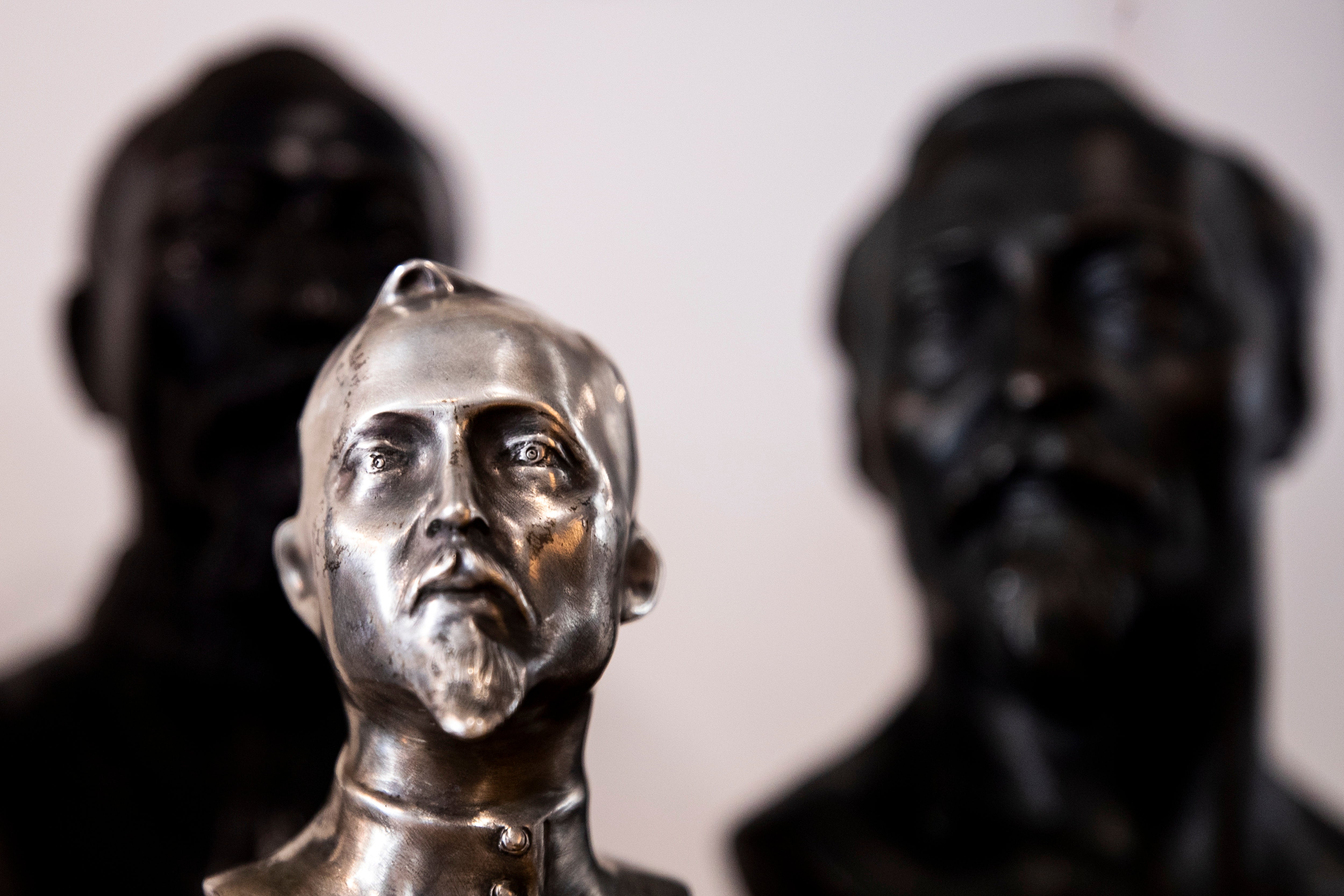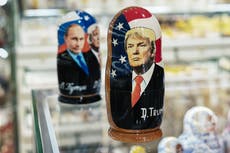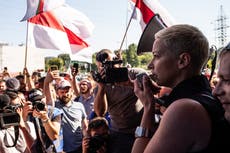The rehabilitation of Iron Felix: Russia to vote on restoring statue of once-dreaded KGB founder
Toppled by protestors after the 1991 attempted coup, the statue of the man who founded the Soviet secret police could soon be restored, reports Oliver Carroll in Moscow


In August 1991, with a failed hardline coup in fading memory, thousands of Muscovites ended a pro-democracy march at Lubyanka Square with a gesture that would come to frame the moment of history.
The toppling of the 11-ton statue of Felix Dzerzhinsky, uncompromising father of the feared Soviet secret police, in full view of his progeny in the KGB’s headquarters opposite, was as complete a victory symbol as they came.
Or so the people thought.
Three decades on, Moscow is once again consumed by talk of a memorial to the Polish-born architect of the Red Terror, NKVD, GPU and countless fearsome acronyms since. Only this time, the direction of travel is different. This time, the drama is all about "Iron Felix" heading back to Lubyanka — a gesture that would be as symbolic as the one thirty years ago.
On Thursday, Russia will launch an indicative online referendum asking whether to return the Dzerzhinsky monument from its current, inauspicious resting place at the Muzeon park of fallen monuments on the south bank of the Moskva river.
The question will ask citizens to choose between the 1958 effigy and a compromise statue to Alexander Nevsky, the 13th-century prince known for his victory over the Teutonic Knights and immortalised in Sergei Eisenstein’s film of the same name. Results of the week-long vote will then be passed to the Moscow City authorities, who — at least officially — will make a final decision.
Like a late night knock on the door of a Soviet dissident, the proposal to return Dzerzhinsky to Lubyanka square is not entirely unexpected. The idea has been mooted almost every other year, wheeled out with as much frequency as the idea moving Lenin out of the Mausoleum. The latest attempt, a halfhearted appeal by Communist leader Gennady Zyuganov, came as recently as 2017.
But this time, things are moving far quicker and far more decisively. Just two weeks stood between the 9 February announcement that a group of pro-Stalin writers had petitioned the Mayor’s office and the confirmation of the new vote. In between, an extraordinary public commission was set up, which discussed the issue, invited witnesses, deliberated and decided on a course of action.
In the background, state television has stepped up rehabilitation of the Polish-born Bolshevik, with new programming emphasising the human qualities of the uncompromising revolutionary. Dzerzhinsky built railways; Dzerzhinsky was against corruption; Dzerzhinsky cared for homeless orphans and children. (Cue a famous Soviet joke "Q: Papa, is it true Dzerzhinsky loved children? ... A: Yes, son, he only despised their parents.")
Officially, the Kremlin has denied any involvement in the breathless process. Earlier this month, spokesman Dmitry Peskov redirected "provocative" questions to the Moscow city mayor’s office. But the speed and timing of the initiative is more than suspicious, coming as it does in the middle of anti-Putin protests, and when the profile of jailed opposition leader Alexei Navalny continues to dominate the news.
For Irina Bogantseva, an educator who played a central role in removing the statue — as a city deputy in 1991 she penned the resolution that allowed a municipal team to send a crane — the referendum is a trick designed to deflect attention from Navalny and his agenda. "The authorities formed a public commission in a couple of days, when that process usually takes months, or never when it is inconvenient to them," she tells The Independent.
Bogantseva said the idea that Dzerzhinsky was a totemic figure for either side is in itself artificial. For protesters back in 1991, the architect of the Soviet secret police was a largely "accidental" symbol, she says. "Removing the statue wasn’t a personal attack on Dzerzhinsky per se, but an emblem of something wider. There was a lot of energy in the city, and it looked for an outlet, and that could have been absolutely anything. They stumbled on Dzerzhinsky."
If the removal of Iron Felix was a largely uncontroversial thing back in 1991, the mood seems to be swinging back in his favour. According to surveys published by Levada Centre, the last remaining independent pollsters in Russia, now less than one in five are against the idea of Dzerzhinsky’s statue being restored to central Moscow. In comparison, in 2000, that number was 50 percent.
Lev Gudkov, the distinguished sociologist who now heads Levada, says targeted propaganda is the main reason for that turnaround. A massive campaign to rehabilitate the reputation of the secret services — highlighting bravery and counterespionage — began almost as soon as Putin assumed office, he says. Stalin was the main beneficiary of the PR work, but Dzherzhinsky was also cast indulgently as a non-corrupt, conviction-led figure.
"Everything connected with terror and his pathological cruelty was quietly moved into the background," the sociologist says.
What is less clear is why the Kremlin has seen the need to move quite so quickly with the referendum — and what precisely it wants to achieve with the exercise.
Maria Lipman, a senior associate at the Program on New Approaches to Research and Security in Eurasia(Ponars) think tank, suggests at least two working theories were in play. The first is a straightforward attempt to re-channel debate from Navalny to a more controlled, artificial arena. A second interpretation was “more serious”, and posits that Russia’s security services are looking to demonstrate they were in charge and exact “moral revenge” on detractors. The two theories are not necessarily mutually exclusive, and may represent competing schools of thought within the system.
A third element is the monument fever that has gripped Russia in the last decade. The signal from above seems to have been to build monuments to moments of historical greatness: from statues of Second World War Soviet soldiers and Vladimir the Great, who brought Christianity to Russia, to a new bronze effigy of Mikhail Kalashnikov, inventor of the AK-47 rifle.

But Lipman says she is unconvinced that the new statues have made a material impact on identity or ideology. The very idea of commemorating heroes in stone and bronze was “a bit obsolete,”, she says. “It doesn’t bring the nation together or get us any closer to a definitive national identity that has been missing since the fall of the Soviet Union.”
Bogantseva agrees. Whatever statue authorities eventually decide to put on Lubyanka Square, whether that be the return of Iron Felix or a new statue of Alexander Nevsky, suggesting it represented a “full circle” back to Russia’s past was “silly.”.
“The genie is out of the bottle, and we’re already a different country with different people,” she says.
“Maybe the future will be terrifying, who knows? But it certainly won’t be the same as our terrifying past.”
Join our commenting forum
Join thought-provoking conversations, follow other Independent readers and see their replies
Comments


Bookmark popover
Removed from bookmarks